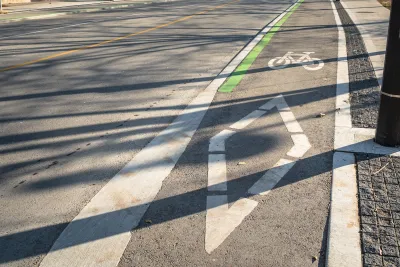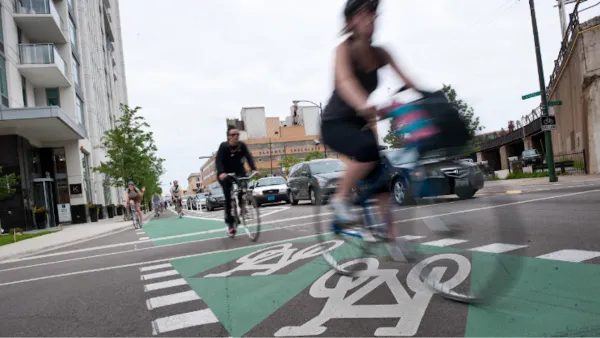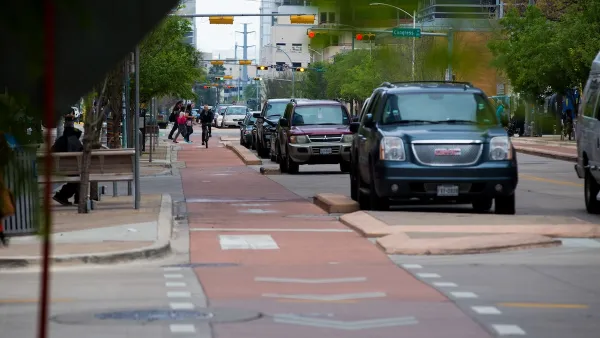Some cities are going so far as to rip out protected bike infrastructure that took years of advocacy to build.

“The trend to remove bike lanes is growing, and it is scary, and based in an imaginary world where the only thing that exists is a car and its suburban driver,” writes Ron Johnson in Momentum, drawing attention to a troubling trend that is seeing city officials in U.S. and Canadian cities removing hard-won bike infrastructure.
At the federal level in the United States, President Trump has expressed disdain for bike lanes and a desire to kill New York City’s congestion program (along with its bike infrastructure). But the trend began before his election, with cities like Ontario and San Mateo moving to destroy existing bike infrastructure.
It’s one thing to remove a painted bike lane, which offered little protection anyway. But, to invest the resources to actually remove safe and separated bike lanes that take planning, and millions of dollars of investment, is so non-sensical it’s always comedic if it weren’t so tragic.
For Johnson, part of the problem stems from the lack of long-term vision and commitment to cycling infrastructure. “A real bike network isn’t just a few painted lines or token bike boulevards. It’s a commitment to creating a connected, protected network that spans an entire city—one that allows cyclists to get from point A to point B without dodging traffic, worrying about unsafe intersections, or feeling like an afterthought in a car-dominated city.”
People who want to see bike infrastructure continue to grow must, in Johnson’s view, advocate loudly for it against the tide of opposition. “It won’t be easy, but it’s crucial that we continue to push for safe, accessible, and well-connected bike networks in our cities.”
FULL STORY: Cities Start to Backpedal on Bike Lanes: A Growing Crisis for Cyclists

National Parks Layoffs Will Cause Communities to Lose Billions
Thousands of essential park workers were laid off this week, just before the busy spring break season.

Retro-silient?: America’s First “Eco-burb,” The Woodlands Turns 50
A master-planned community north of Houston offers lessons on green infrastructure and resilient design, but falls short of its founder’s lofty affordability and walkability goals.

Delivering for America Plan Will Downgrade Mail Service in at Least 49.5 Percent of Zip Codes
Republican and Democrat lawmakers criticize the plan for its disproportionate negative impact on rural communities.

Test News Post 1
This is a summary

Test News Headline 46
Test for the image on the front page.

Balancing Bombs and Butterflies: How the National Guard Protects a Rare Species
The National Guard at Fort Indiantown Gap uses GIS technology and land management strategies to balance military training with conservation efforts, ensuring the survival of the rare eastern regal fritillary butterfly.
Urban Design for Planners 1: Software Tools
This six-course series explores essential urban design concepts using open source software and equips planners with the tools they need to participate fully in the urban design process.
Planning for Universal Design
Learn the tools for implementing Universal Design in planning regulations.
EMC Planning Group, Inc.
Planetizen
Planetizen
Mpact (formerly Rail~Volution)
Great Falls Development Authority, Inc.
HUDs Office of Policy Development and Research
NYU Wagner Graduate School of Public Service





























